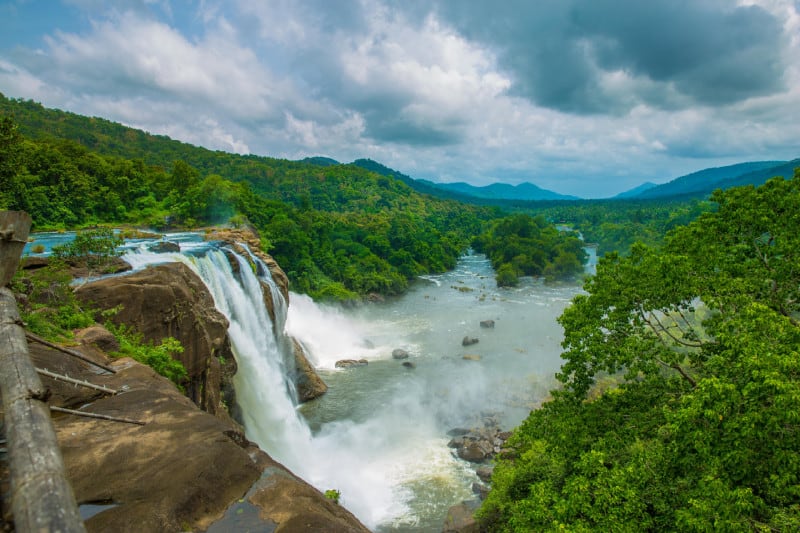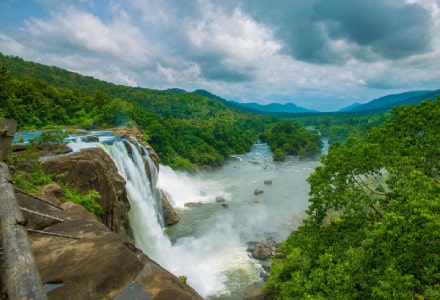
Athirapally Falls Facts
- Athirapally Falls forms a rather picturesque marvel situated in Athirapally Panchayath, in Thrissur District of Kerala. This sits on the southwestern coast of India, in Asia.
- This waterfall is also located on the west-flowing Chalakudy River, near the Vazhachal Forest Division and the Sholayar ranges.
- This picturesque 80 ft (24 m) waterfall and the nearby Vazhachal Falls remain extremely popular tourist destinations. Athirapally Falls has also been nicknamed The Niagara Falls of India.
- Yet, controversy about a state-proposed hydroelectric dam on the Chalakudy River, at a spot above the waterfalls, began in the 1990s and continues on to this day.
Related Articles
Yosemite Falls Ebor Falls Linville Falls
Photographer: Souradeep Ghosh
CC License: https://bit.ly/3xiftQo
Athirapally Falls Source and Course
The Athirapally Falls draws its water from the rather impressive 90 mi (145 km) long Chalakudy River. The river originates in the Anamudi mountains of the Western Ghats.
It then flows through the Vazhachal Forest toward the Arabian Sea. As a result, the river initially runs smoothly yet quickly becomes more turbulent as it nears Athirapally.
At Athirapally Falls, the water also surges around large and numerous rocks and cascades down in three separate plumes. Below the falls, the river remains rather turbulent for a distance of approximately 0.6 mi (1 km), until it reaches Kannamkuzhi.
At that point, it calms significantly and consequently flows smoothly until reaching the dam at Thumburmuzhi.
Athirapally Falls Ecology
The Athirapally Falls themselves represent a beautiful example of Nature. Yet, they represent only part of the natural splendor of the region.
Forest wildlife in the area includes the Asiatic Elephant, tiger, bison, sambar, and the lion-tailed macaque. The unique 590 ft (180 m) elevation of the riparian forest in the Athirapally-Vazhachal area is also the only location where all four South Indian species of hornbills are found dwelling together.
These bear the names of the Malabar Pied Hornbill, the Great Hornbill, the Indian Grey Hornbill, and the Malabar Grey Hornbill.
Plantations in the region also contain great quantities of teak, eucalyptus, and bamboo. The river also provides a habitat for 85 known species of freshwater fishes. Among these, 35 are endemic species.
Features Sharing Its Area
Jeju Island Wadi Rum Red Beach
Check out our other articles on Ban Gioc-Detian Falls, Angel Falls, Minerva Springs and Terrace

